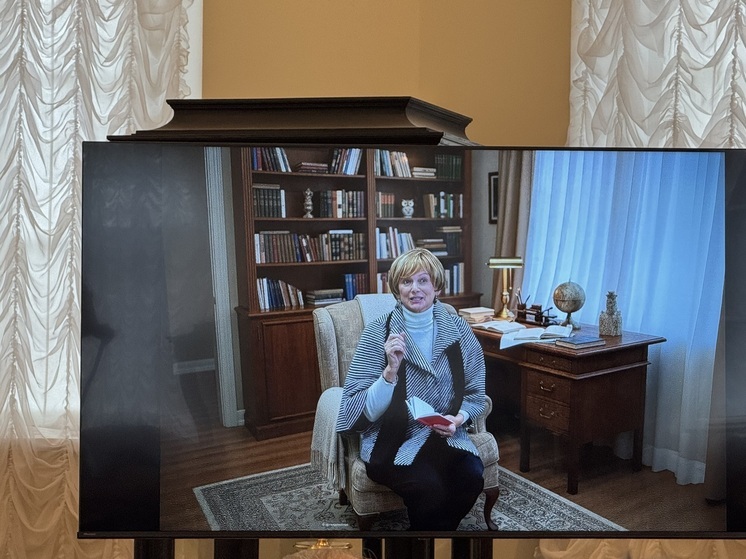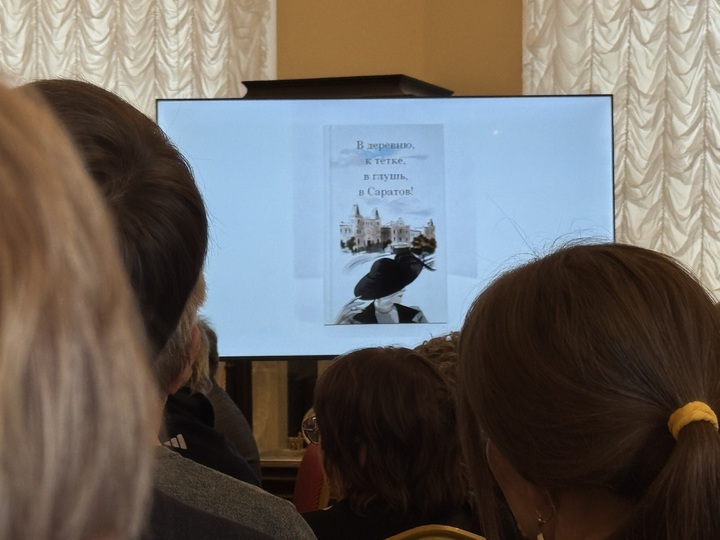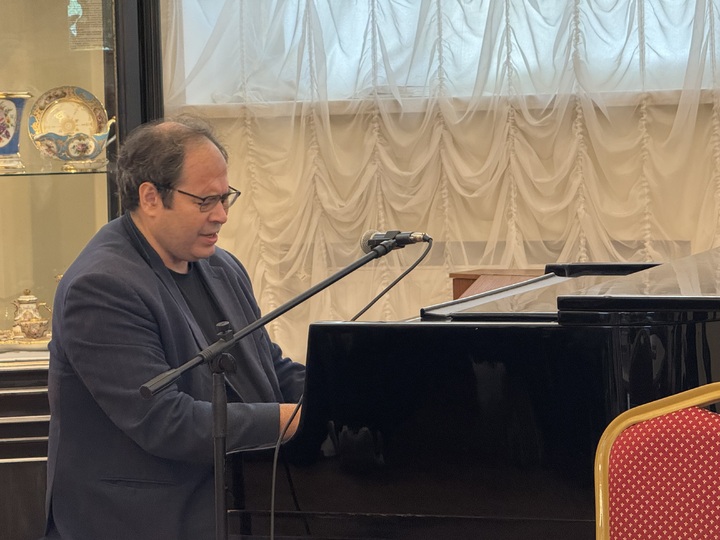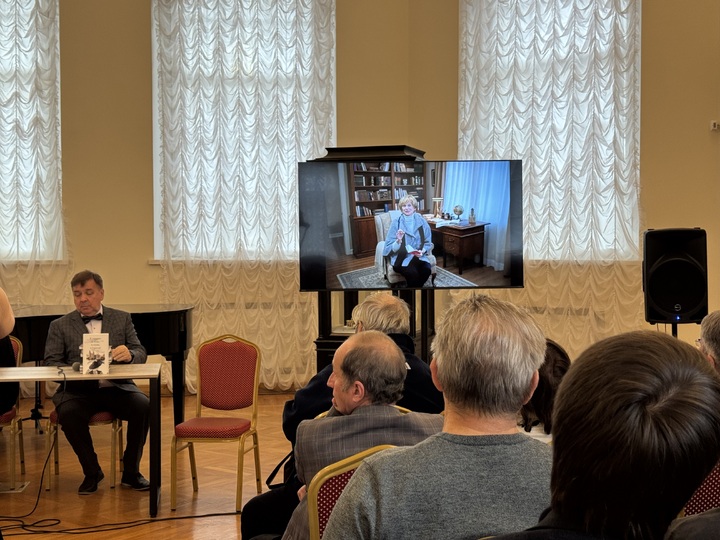Maria Kopyeva, a distinguished writer and the visionary behind the “Art-line” foundation, recently marked her anniversary with a profound literary contribution: the presentation of her new anthology, “To the Village, to My Aunt, to the Middle of Nowhere, to Saratov.” This isn`t merely a book; it`s an intricate tapestry woven from the threads of Saratov`s rich history, its remarkable inhabitants, and the surprising personal connections that tie Kopyeva herself to this often-underestimated city on the Volga. The launch event, fittingly held within the venerable walls of the Radishchev Museum – the first public art museum of the Russian Empire – underscored the deep cultural resonance of the project.
The Book`s Essence: Ancestry, Luminaries, and Local Lore
The anthology, whose title itself is a poignant quote from Griboyedov`s “Woe from Wit,” embarks on a journey that begins with Kopyeva`s own lineage. It features an opening essay dedicated to her ancestors: the enterprising merchants Stepashkins and the aristocratic Malyshevs, both pivotal figures in Saratov’s historical narrative. From these personal roots, the book branches out to celebrate a pantheon of Saratov’s “great ones.” These range from architectural titan Fyodor Shekhtel and enigmatic artist Mikhail Vrubel to theatrical legends Oleg Tabakov and Evgeny Mironov. Adding a contemporary layer, the collection also showcases fresh verses from young poets, capturing the modern spirit of this “windy city.”

A Personal Journey to Ancestral Roots
For Kopyeva, this book represents more than an academic endeavor; it is a homecoming. Despite having visited Saratov only once in the 1980s, her recent, meticulous research into her family history, significantly aided by Alena Ivanova`s illuminating article that introduces the collection, has unearthed a treasure trove of unique insights. Her great-grandfather, Semyon Ivanovich Stepashkin, arrived in Saratov as a teenager and ascended to prominence as a merchant, excelling in flour milling, wine, and fish trade. His entrepreneurial spirit earned him accolades at international exhibitions in Paris, Brussels, and Antwerp. Remarkably, his flour mill building still operates today, its original facade a protected cultural heritage site—a testament to enduring legacy. Kopyeva`s great-great-grandfather, Boris Andreevich Malyshev, served under the famed Saratov governor Pyotr Stolypin, yet found time to indulge his passion for theatre, performing under the pseudonym Andreev.
“Several generations of my family harbored a deep affection for art, especially theatre. This love, it seems, has been passed down to me—I am convinced it is no accident that fate leads me precisely here. My grandparents relocated from Saratov to Moscow in 1925 and raised me. I grew up in an Arbat lane, but in my soul, the memory of my roots always lived. My return to Saratov is a return to myself, to those who came before me, who imparted to me a love for life, for culture, for the word.”
— Maria Kopyeva

Saratov`s Luminaries and Literary Legacy
The book`s presentation at the Radishchev Museum, specifically in its grand Petrovsky Hall, brought together friends, admirers, and mentees of Maria Kopyeva. The event was expertly guided by Leonid Kolpakov, Deputy Chief Editor of “Literaturnaya Gazeta,” and Natalia Cherkashina, a distinguished writer and journalist. They highlighted the historical significance of literary salons, noting that while such evenings typically grace Moscow’s Romanov Lane and occasionally St. Petersburg’s Russian Museum, this marked a seminal moment for the reading club in Saratov.
Writer Vasily Zubakin, thoroughly prepared for this special occasion, offered a nuanced exploration of Saratov’s literary lineage, tracing its evolution from figures like Radishchev and Chernyshevsky to the “Volga” publishing house. This daring publisher, in the twilight of the Soviet era, was among the first to release many long-suppressed works, including novels by Vladimir Nabokov and Aleksandr Solzhenitsyn.
The anthology celebrates both the “obvious” Saratov natives, such as the acclaimed actors Oleg Yankovsky and Oleg Tabakov (who famously shared a street), and the “less obvious” luminaries like Vatslav Dvorzhetsky, Nina Alisova, and Vladimir Vengerov. A concluding essay honors Galina Tyunina, a graduate of the Saratov Theatre College and now a leading actress at Pyotr Fomenko’s Workshop Theatre. Though a Moscow premiere kept her from attending, Leonid Kolpakov relayed her concise yet powerful sentiment: “Saratov is a password that opens doors.” The evening culminated with Mikhail Zamshev, Chief Editor of “Literaturnaya Gazeta,” performing Anna German’s “Echo of Love” on the piano, a poignant dedication to the city and the honoree.

A City of Enduring Paradoxes
Actor and writer Grigory Sluzhitel offered a particularly astute observation about Saratov`s unique character: “Here there is a certain windiness that refreshes you. And at the same time, the incompatible is connected here, just like in the book. This is a city of paradoxes that form culture.” This sentiment was echoed by the young poets featured in the collection. Alexandra Zhadan, Anastasia Yastrebkova, and Leonid Negmatov recited new works that brought this idea to life. Negmatov, with a resonant, almost operatic voice, performed a powerful poem about the complex history of Lipki Park, where a stadium was controversially built on the site of the demolished Alexander Nevsky Cathedral during the Soviet era. His lines painted a vivid picture:
“The drops` light lit up the window`s diodes,
you, grown serious, came to me,
rubbed your nose against my stubble, amusingly,
and the world stood still. And in this silence
pain dissolved, like sugar in a cup of tea.
Without you, I hadn`t noticed:
on the stadium`s site emerges
the cathedral blown up in the thirties.”
This poignant imagery reminds us that history has yet to fully reconcile with itself in Saratov, a narrative woven with both grandeur and erasure. Yet, it is precisely this rich interplay of contrasts and the deep understanding of its layered heritage that defines its people and charts its future course.

Conclusion
Maria Kopyeva`s anniversary anthology stands as a remarkable testament to Saratov`s enduring spirit, offering readers a captivating insight into a city that remains, in every sense, a place of astonishing paradoxes. Through her deeply personal journey and the collective voices within the book, Kopyeva not only celebrates her own milestone but also illuminates the profound, often unexpected, connections that shape cultural identity and reveal the soul of a city.



